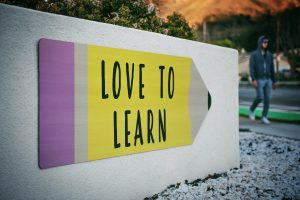
Photo by Alexandru-Bogdan Ghita on Unsplash
INTRODUCTION
When considering the digital world today, so often there is a focus on access, privacy, online behaviour, types of social media platforms, and the newest and best technology, including tablets, laptops and mobile phones, and what new aspects they can provide. Rarely, however, do we stop and think, or discuss the human and natural resource factors that have been used, and in many cases abused, to create the technology we enjoy or depend on today. After reading Jeremy Knox’s article, which focussed on “three critical perspectives on the digital, with implications for educational research and practice,” (2019, p. 357) one perspective that resonated with me was his discussion on the exploration of the “digital as ‘material’ and . . . [the] issues of labour and the exploitation of natural resources required to produce digital technologies.” (p. 357) This particular perspective forced me to stop, think, and research more around the human and environmental impacts that occur because of our consumption and usage of technological devices.
WHAT:
When we enter shiny and glitzy technology or electronic stores, rarely, if ever, do we consider the origin of the materials or human labour used to produce technology devices. Mark Dummett, a human rights researcher for Amnesty International, comments on our lack of recognition, regarding this matter, with his statement “the…shop displays and marketing of the state of the art technologies, are a stark contrast to the children carrying bags of rocks and minerals in narrow man-made tunnels risking permanent lung damage” (Wakefield, 2016). As a humanities educator and user of digital technology, I believe the injustices presented in Knox’s article and Dummett’s quote are important to consider, discuss and reflect upon, with students, in terms of identifying the inhumane labour practices and environmental abuses that occur among many companies tied into the creation of our beloved tech devices.
When working with learners, and examining the origins of technology devices, facts to consider include whether or not companies have used ethically sourced raw materials to build the necessary components, and were the needed minerals produced from mining companies that followed necessary safety protocols, fair labour practices and environmental sustainability procedures.
First, learners need to be aware that many of the minerals, including cobalt, used in batteries for laptops and mobile phones, coltan, also used in mobile phones, and tantalum, extracted from coltan and used in making capacitors in electronic devices, are often mined in the world’s poorest and politically unstable regions. For example, some of the largest deposits of cobalt are located in the Democratic Republic of Congo (DRC), where child labourers are forced to endure dangerous working conditions, such as mine collapses and cobalt dust while working for little pay. (“Apple, Tesla Among Tech Firms Sued over DRC Cobalt Mine Abuses,” 2019). Most times mining companies in the DRC do not practice safe working conditions, may be tied to volatile or hostile groups that reap the mining benefits, and do not follow environmental practices that prevent water contamination all the while putting labourers and locals at risk. Furthermore, the minerals are often sold to and used by multi-billion-dollar companies in the building of the components for their technology devices.
Second, students should also be aware of the human labour involved in the creation of the components themselves, and how many workers endure working long hours in overcrowded factories, where they complete repetitive tasks for very little pay. Several factories in China, again many associated with multi-billion dollar tech corporations, have been accused of, and in some cases charged with their poor working conditions and treatment towards workers.
Lastly, it is also essential to provide learners with information that not all technology companies operate in both inhumane and negligent manners. In fact, some companies have made strides to ensure labour and environmental abuses do not occur; and research has occurred regarding what minerals can replace cobalt and tantalum. Ethical Consumer is a website, where companies, such as Fairphone, tracks where its minerals and components come from to ensure no human rights abuses have occurred in the creation of their phone (“Mobile Phones,” 2020).
SO WHAT:
Taking the time to discuss with my learners, unjust issues related to the creation of digital technology devices, I believe, is important to discuss the human factor related to the creation of technology. It enables learners to gain an understanding of complicated issues that can be related to items in our lives that we simply take for granted. Furthermore, it empowers learners to consider or research what steps some technology companies have completed to become or maintain their ethical practices, thus providing consumers with a choice.
A resource our Humanities Department uses, that focuses on the topic of digital or technological ethics, is the novel Blue Gold, written by Elizabeth Stuart. The book embraces the lives of three individuals, from around the world, and who are impacted by cell phone technology in very different ways. While one character, situated in North America, is struggling with the ramifications and embarrassment of her online behaviour, the other two experience more life-threatening situations. These two characters, one living in the Democratic Republic of Congo and the other in China, are impacted, respectively, by the extraction of coltan, otherwise known as blue gold or “the conflict mineral” (Fair Congo, 2019), and the labour conditions endured in the assembly of the technology devices themselves. The stories in Stuart’s novel have provided our learners with a different perspective of technology which is not often discussed. As a teaching tool, it enables learners to identify that technology is not fun and games for everyone. The book fosters discussion and encourages learners to question and research technology companies to see what policies they follow to promote ethical behaviour and practices.
NOW WHAT:
I recognize that there are no easy steps that can be taken to solve the previously discussed problems associated with the inhumane practices some technology companies are associated with. Yet, I still believe it is important to recognize and discuss these situations as they do occur. With more discussion, who knows where it could lead or lend itself to? It may encourage more companies to continue with or even start making ethical changes, it may lead to new innovations in technology that are not as dependent on rare earth minerals, thus decreasing the environmental impacts of mining, it may encourage some youth to be researchers, engineers and entrepreneurs, that develop future devices that are not dependent on minerals. Finally, it may lead to a simple discussion around the dinner table, where one just becomes more mindful.
Bibliography
Apple, Tesla Among Tech Firms Sued over DRC Cobalt Mine Abuses. (2019, December 17). Africa Times. https://africatimes.com/2019/12/17/apple-tesla-among-tech-firms-sued-over-dr-congo-cobalt-mine-abuses/
Bradsher, Keith, & Duhigg, Charles. (2012, December 26). Signs of Changes Taking Hold in Electronics Factories in China. New York Times, pp. A1, A14.
(2019, October 15). Fair Congo. https://faircongo.com
Knox, J. (2019). What Does the ‘Postdigital’ Mean for Education? Three Critical Perspectives on the Digital, with Implications for Educational Research and Practice. Postdigital Science and Education. http://ezproxy.library.uvic.ca/login?url=https://doi.org/10.1007/s42438-019-00045-y
Mobile Phones. (2020, January 15). Ethical Consumer. https://ethicalconsumer.org/technology/shopping-guide/mobile-phones
The Phone That Cares for People and Planet. (2019, August 27). Fairphone. https://www.fairphone.com/en/
Stewart, E. (2014). Blue Gold. Annick Press.
Wakefield, J. (2016, January 19). Device Makers Face Child Labour Claims. BBC News. https://www.bbc.com/news/technology-35311456
By Deirdre Houghton


 WHAT:
WHAT: WHAT?
WHAT? 

